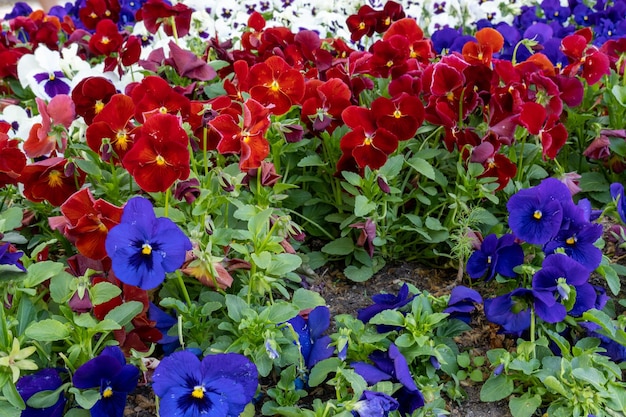In the teachings of the Bahá’í Faith, the symbolism embedded within nature often serves as a profound testament to the Divine reality and humanity’s interconnectedness. The phrase “Created This Flower for All You Men” evokes a poignant narrative that encapsulates themes of love, beauty, and the unity of existence. This exploration aims to illuminate these themes and reflect on how they offer an ethical and spiritual framework for contemporary society.
The initial aspect to consider is the inherent beauty present in nature, epitomized by flowers. Each flower flourishes with its unique hues and fragrances, representing a facet of the Creator’s artistic expression. Bahá’í teachings assert that the beauty manifest in the natural world is not arbitrary; rather, it serves an essential purpose. It illustrates the potential for harmony and diversity within the human experience. The flower, with its vibrant petals and delicate structure, symbolizes hope and the possibility of transformation in one’s life.
Moreover, this imagery fosters a paradigm shift in how we perceive our surroundings. The flower, while seemingly simple, encapsulates complexities akin to human emotions and relationships. Just as flowers bloom under the right conditions, so too do individuals thrive in environments of love and compassion. The Bahá’í teachings advocate for nurturing relationships that foster mutual respect and understanding, thereby enhancing personal and communal growth.
In the narrative of “Created This Flower for All You Men,” the act of creation itself emerges as an allegory for the diversity of humanity. Just as a garden flourishes with various species of flowers—each adding to the collective beauty—the Bahá’í Faith champions the idea that humanity is enriched by its multiplicity. This notion beckons individuals to appreciate differences among cultures, beliefs, and backgrounds, acknowledging that each contributes unique insights and strengths to the global tapestry.
Furthermore, the phrase serves as a clarion call to embrace love as foundational to human existence. Within the Bahá’í teachings, love is viewed as both a divine attribute and a binding force among people. It is not merely a transient feeling but a commitment to act for the well-being of others. This is particularly vital in fostering a sense of unity that surpasses superficial divides. The shared beauty of a flower can transform into a metaphor for unity in diversity, reminding adherents that love is essential in navigating life’s complexities.
The nurturing aspect of the flower also aligns with the ethical imperatives found in Bahá’í teachings. Just as flowers require water, sunlight, and care to bloom, individuals ought to cultivate their virtues and relationships through thoughtful actions and intentions. The Bahá’í Faith encourages the development of qualities such as kindness, patience, and generosity. In doing so, followers are reminded that these virtues contribute not only to personal fulfillment but also to the collective advancement of society.
The promise of love and beauty extends beyond individual relationships; it encompasses the broader societal constructs that influence human interaction. The teachings emphasize the importance of justice and equity, asserting that a society can only prosper when all its members are treated with dignity and respect. This encompasses addressing prejudices and systemic inequalities that hinder the flourishing of individuals akin to a wilting flower deprived of necessary nutrients.
Moreover, the allegory of the flower evokes a sense of purpose that resonates deeply within the human spirit. Every flower has a unique life cycle, symbolizing the various stages of human existence—from birth and growth to maturity and eventually death. This natural cycle of life compels individuals to contemplate their own paths and contributions, inspiring them to pursue lives that embody purpose and service to humanity. Adherents have the opportunity to reflect on how their actions impact the world, urging them to leave a legacy akin to a garden that continues to bloom even after they have departed.
Curiosity is piqued when one considers the transformative power of love as depicted through the allegory of the flower. Love, in its essence, is an infinite reservoir, capable of nurturing not only personal relationships but also communal bonds. The potential to enact change through love is a recurring theme in the Bahá’í teachings, advocating that one can transform society beginning with oneself. The quest for personal growth and the aspiration to contribute positively to the world can initiate a ripple effect, resulting in widespread societal transformation.
The journey towards understanding and embodying these principles requires conscious reflection and dedication. The teachings invite individuals to engage with the metamorphic aspects of their lives, recognizing that suffering and growth often coexist. The flower’s journey from a seed to full bloom is emblematic of personal resilience—a reminder that beauty often arises from adversity.
In conclusion, the metaphor of the flower within the Bahá’í teachings embodies the essence of love, beauty, and unity that transcends individual existence. It fosters an appreciation for diversity, calls for ethical living, and inspires personal growth while promoting communal harmony. As one reflects upon the profound statement “Created This Flower for All You Men,” it becomes evident that these teachings offer not merely a path to personal fulfillment but a blueprint for a more compassionate and interconnected world. Embracing such perspectives has the potential to transform individuals and societies alike, nurturing a garden of humanity where love blossoms in every heart.
